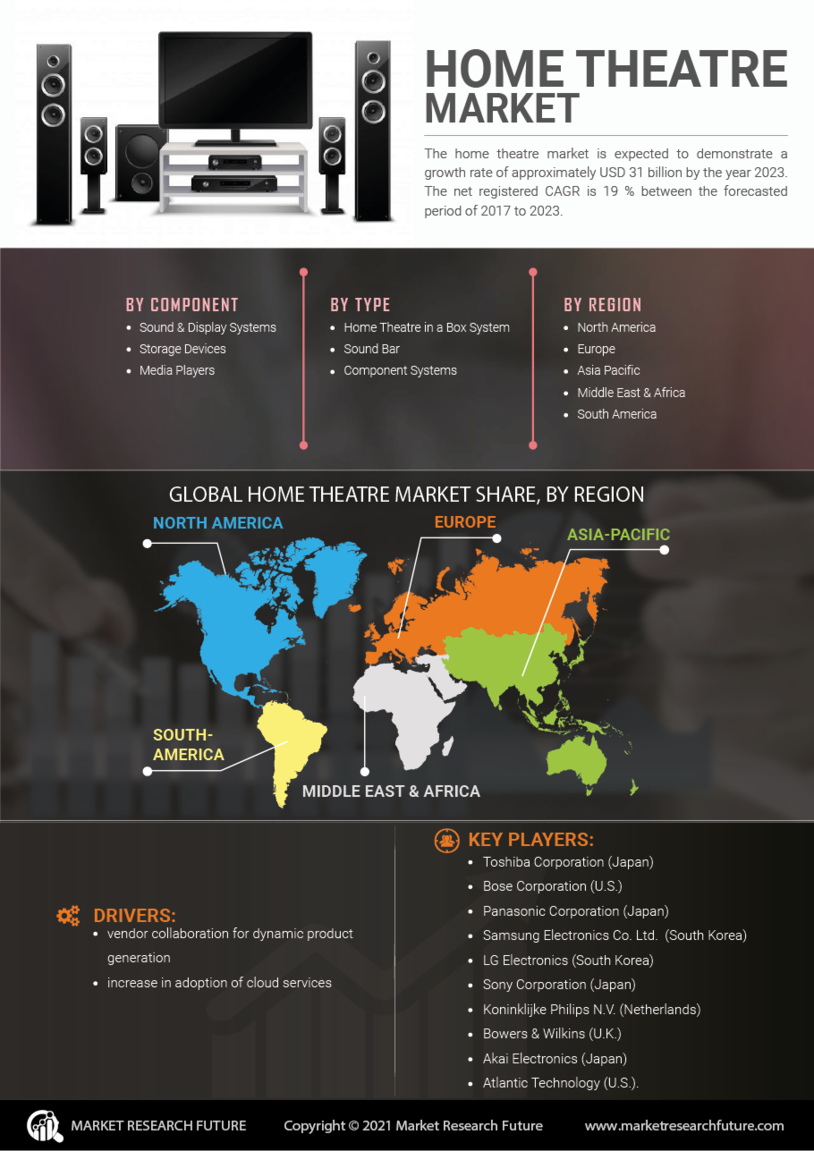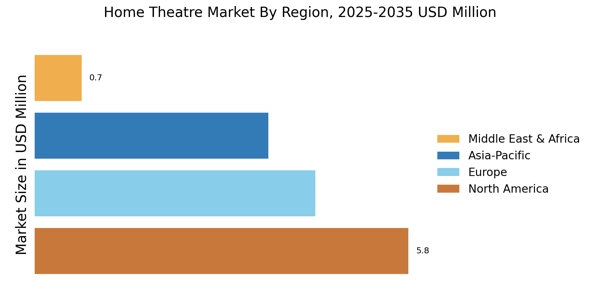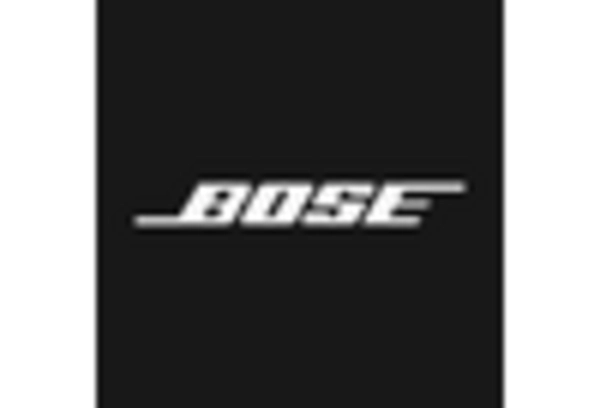The Home Theatre Market is currently characterized by a dynamic competitive landscape, driven by rapid technological advancements and evolving consumer preferences. Key players such as Sony (Japan), Samsung (South Korea), and Bose (United States) are at the forefront, each adopting distinct strategies to enhance their market positioning. Sony (Japan) emphasizes innovation through its cutting-edge audio and visual technologies, while Samsung (South Korea) focuses on integrating smart home capabilities into its home theatre systems. Bose (United States), on the other hand, leverages its strong brand reputation to deliver premium audio experiences, thereby appealing to audiophiles and casual users alike. Collectively, these strategies contribute to a competitive environment that is increasingly focused on technological differentiation and consumer-centric solutions.
In terms of business tactics, companies are increasingly localizing manufacturing to reduce costs and enhance supply chain efficiency. This approach appears to be particularly relevant in the context of the Home Theatre Market, which is moderately fragmented, with several players vying for market share. The collective influence of these key players shapes a competitive structure that encourages innovation and responsiveness to consumer demands, thereby fostering a vibrant market ecosystem.
In August 2025, Samsung (South Korea) announced the launch of its new line of QLED home theatre systems, which incorporate advanced AI-driven sound optimization features. This strategic move not only reinforces Samsung's commitment to innovation but also positions the company to capture a larger share of the premium segment of the market. The integration of AI technology into sound systems is likely to enhance user experience, making it a pivotal development in the competitive landscape.
In September 2025, Bose (United States) unveiled a partnership with a leading streaming service to offer exclusive audio content tailored for its home theatre systems. This collaboration is strategically significant as it not only enhances the value proposition of Bose's products but also aligns with the growing trend of content-driven consumer engagement. By providing unique audio experiences, Bose aims to differentiate itself in a crowded market, potentially attracting new customers and retaining existing ones.
In October 2025, LG (South Korea) revealed its plans to invest in sustainable manufacturing practices for its home theatre products. This initiative reflects a broader industry trend towards sustainability, which is becoming increasingly important to consumers. By prioritizing eco-friendly production methods, LG positions itself as a responsible brand, likely appealing to environmentally conscious consumers and enhancing its competitive edge.
As of October 2025, the Home Theatre Market is witnessing significant trends such as digitalization, sustainability, and the integration of artificial intelligence. Strategic alliances, like those seen between Bose and streaming services, are reshaping the competitive landscape, fostering innovation and enhancing consumer engagement. Looking ahead, it is anticipated that competitive differentiation will increasingly pivot from price-based strategies to a focus on technological innovation, enhanced user experiences, and reliable supply chains. This shift underscores the importance of adaptability and forward-thinking in maintaining a competitive advantage in the evolving market.

















Leave a Comment